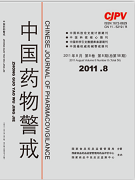|
|
Comparative Study on the Content of Saikosaponin a and Acute Toxicity of Different Extracted Craft Samples of Bupleurum and its Processed Products
SUN Rong, HUANG Wei, YIN Jian-wei
2011, 8(8):
454-458.
Objective To discuss the influence of different extracted crafts on the content of saikosaponin a and acute toxicity of Bupleurum and its processed products. Methods Separately using water, 60% ethanol and 60% ethanol-water extracted methods,to prepare the extracts of different processed products. HPLC method and the classical method of acute toxicity were used to determine the content of saikosaponin a and the acute toxicity of the Bupleurum and its processed products, and compare the content and the acute toxicity. Results The content of saikosaponin a on the water extracts of different processed products which included health products, fried products, vinegar products, wine products and honey roasted products was separately 0.08%, 0.07%, 0.00%, 0.04%, 0.00%, and calculated by crude drug content, the 60% ethanol extracts of different processed products was separately 0.15%, 0.06%, 0.30%, 0.09%, 0.08%, and calculated by crude drug content, the MTD were respectively 94, 93.6, 50.8, 60.4, 32 g·kg-1·d-1. The content of saikosaponin a on the 60% ethanol-water extracts of different processed products was separately 0.20%, 0.19%, 0.16%, 0.13%, 0.20%, and calculated by crude drug content, the MTD were respectively 46.4, 54.2, 62.4, 53.6, 48.4 g·kg-1·d-1. Making continuous observation of 14 days, dead mice were immediately dissected and there were no obvious pathological changes, and the weight and behavior could gradually restored. Conclusion The extracted crafts had different influence on the content of saikosaponin a and the acute toxicity of the Bupleurum and its processed products, and the content of saikosaponin a and the acute toxicity of the 60% ethanol-water extracted craft samples were the biggest, suggesting that the toxicity of Bupleurum had some relevance with the content of saikosaponin a.
References |
Related Articles |
Metrics
|
